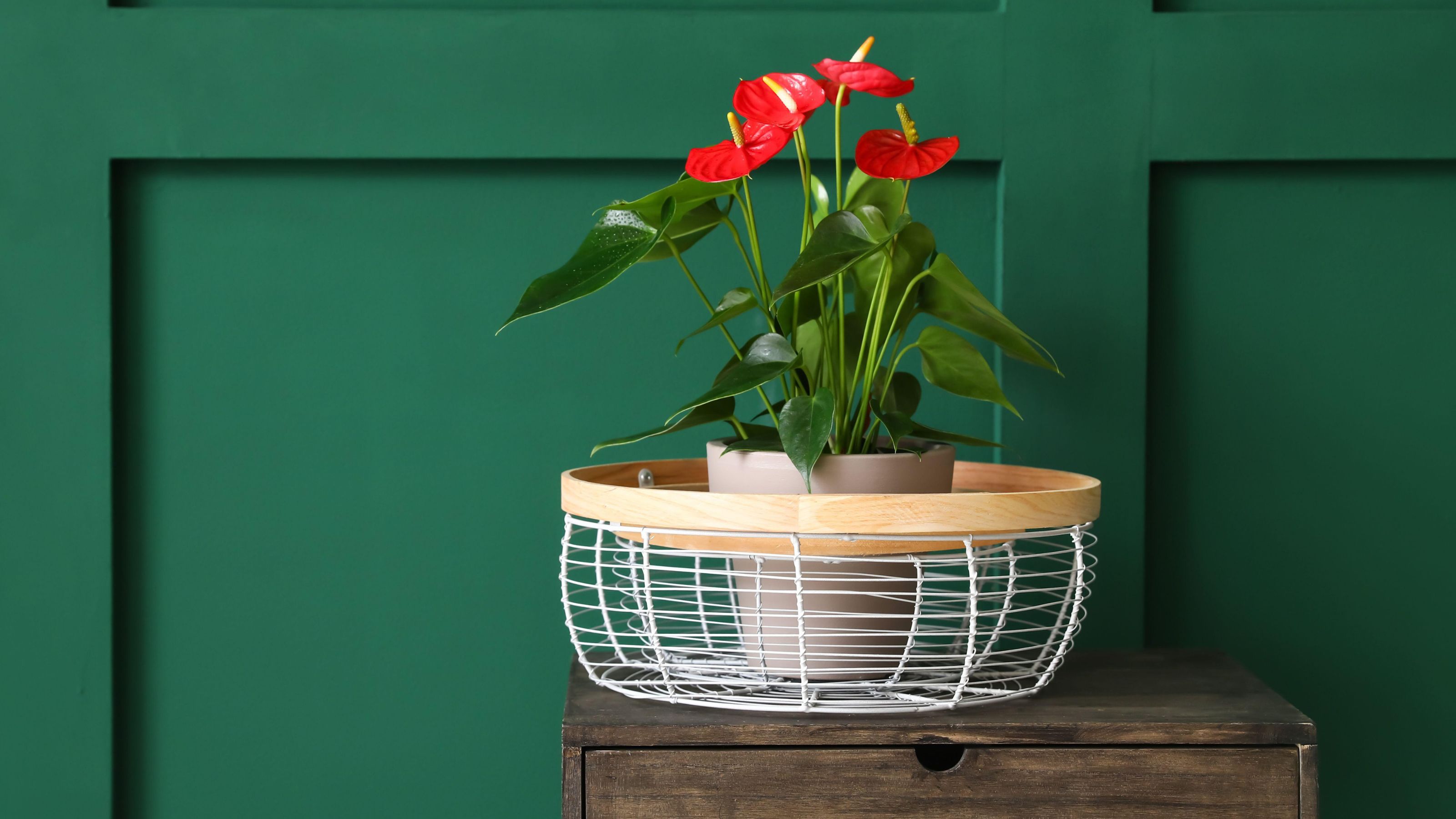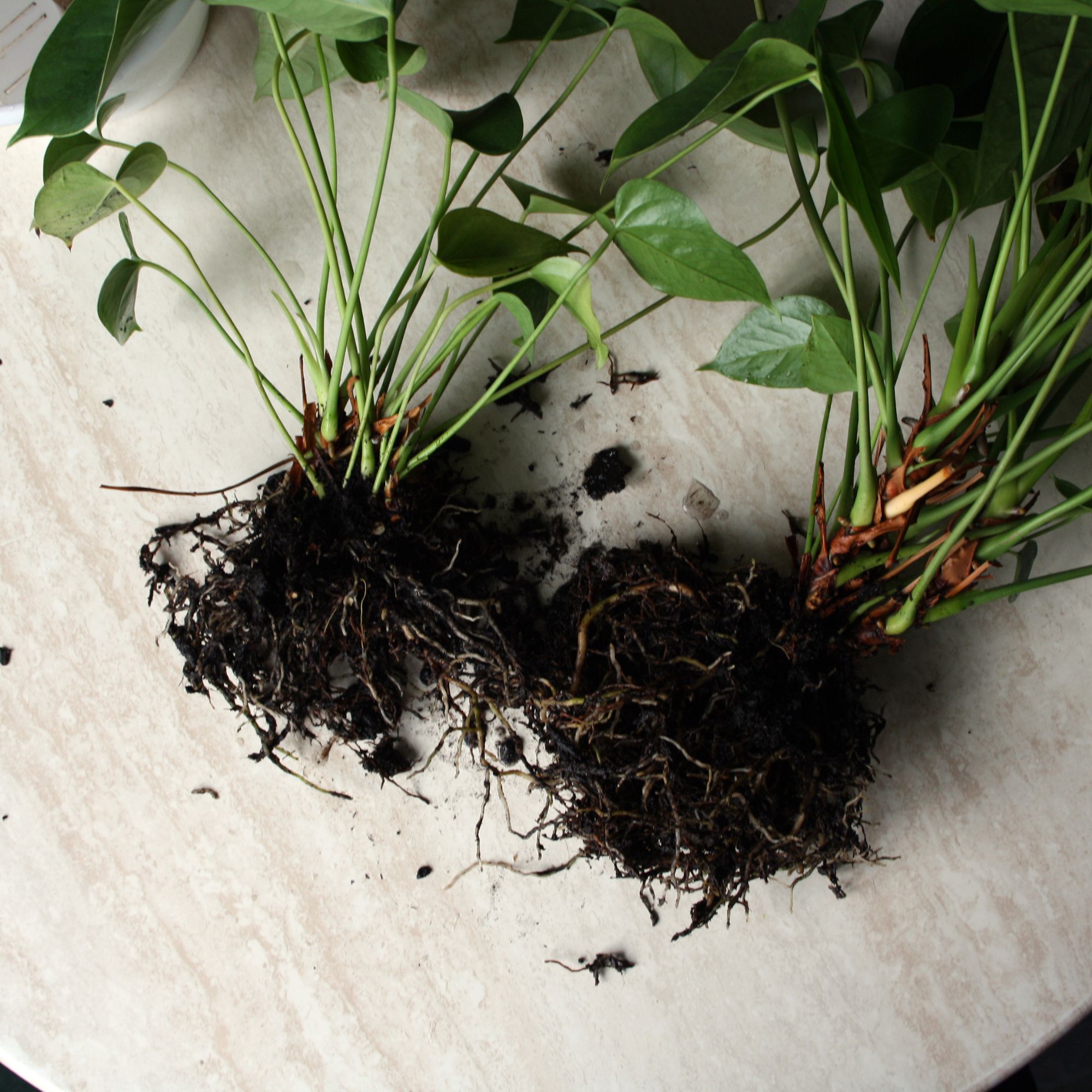How to propagate anthurium – the three best ways to double these pretty tropical plants
Whether you propagate anthurium through cuttings or separation, you'll love these ways to increase your collection


Learning how to propagate anthurium is the perfect way to increase your collection of this beautifully tropical houseplant.
The secret to a successful cutting is to have a healthy parent plant, so knowing how to care for anthurium is essential. Once you have a thriving anthurium, it is surprisingly easy to make more of this favourite house plant idea. In fact, there are three different methods from which to choose.
How to propagate anthurium - 3 methods
What you'll need
- A mature anthurium, like this Anthurium from Leaf Culture
- Sterilised pruning shears, like these Mijova pruning scissors from Amazon
- Glass or bottle (if propagating in water)
- Water
- Nursery pot for potting on, like these seed starting pots from Amazon
- Free-draining compost with orchid bark – like this Anthurium compost from Grow Tropical
How to separate an anthurium
Division is the easiest way to propagate anthurium and will instantly channel urban jungle room ideas. However, the secret to success is patience. Make sure that your anthurium is ready to be separated – wait until you have two stems in the pot, each with five leaves. 'Propagating anthuriums by division is best done during the spring and summer,' says Evie Brownlee from Grow Urban.
If you are a keen gardener, you may already be familiar with dividing plants, as it's the best way to propagate peonies.
1. Take out of pot and remove compost

To propagate anthurium via division, start by removing the plant from the pot.
It is a good idea to submerge the plant in a bucket of water. This will help to loosen and wash away some of the soil around the roots. This will make it easier to separate the two plants and it also gives you a chance to check on the plant's root health.
However, if you prefer not to do this, you can just as easily separate the plant while it's still in its soil.
Sign up to our newsletter for style inspiration, real homes, project and garden advice and shopping know-how
2. Seperate the two anthurium plants

To propagate anthurium by division, you need to tease apart the rootball. Try not to break too many roots, but a little breakage won't be detrimental. This should result in two distinct plants – complete with their own sets of leaves and root systems.
3. Repot the new anthurium plants

‘Plant the divided sections in separate pots with well-draining soil, and care for them as you would mature plants (place a plastic bag over them to retain the humidity until they have started growing),’ says Richard Cale, owner of Leaf Culture.
As this is one of the most popular houseplants, why not gift your new plant to a loved one and spread the joy of houseplants?
Propagate anthurium from cuttings

You can also propagate anthurium via stem cuttings. Cut the stem between two nodes (the parts where the leaves emerge) using clean secateurs. Place the cut stem in water on a windowsill in indirect light and watch the roots grow. If you are growing several cuttings – why not consider setting up a propagation station? When the roots are a few inches long, you can pot on into free-draining soil.
If you're lacking in confidence with the prospect of taking cuttings, try taking cuttings the Monty Don way for a greater chance of success.
Propagate anthurium from a sucker

If you have a healthy sucker – one with at least five leaves – you can use this to propagate anthurium. Simply snip the extra stem off using clean secateurs, making sure that you also take a good proportion of its root system – you'll have to cut beneath the soil a little. Then plant it in free-draining compost or water and let it grow.
This method shares similarities with how to propagate a Chinese money plant, as this plant also produces smaller plants from its base.
In no time you have a new mini collection of anthuriums to dot around your home or gift to friends.

Holly is one of Ideal Home’s content editors. Starting her career in 2018 as a feature writer and sub-editor for Period Living magazine, she has continued this role also adding regular features for Country Homes & Interiors and the Ideal Home website to her roster. Holly has a passion for traditional and country-inspired interiors – especially kitchen design – and is happiest when exploring the countryside and hills of the Lake District. A keen gardener, she is a strong believer that you can never have too many houseplants.